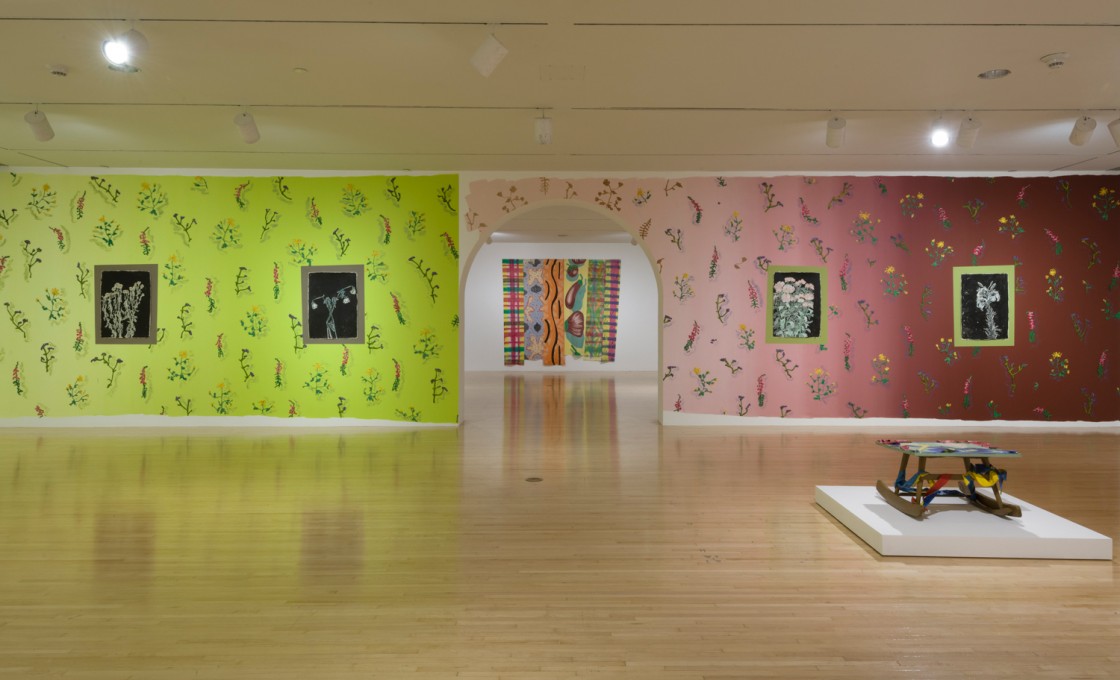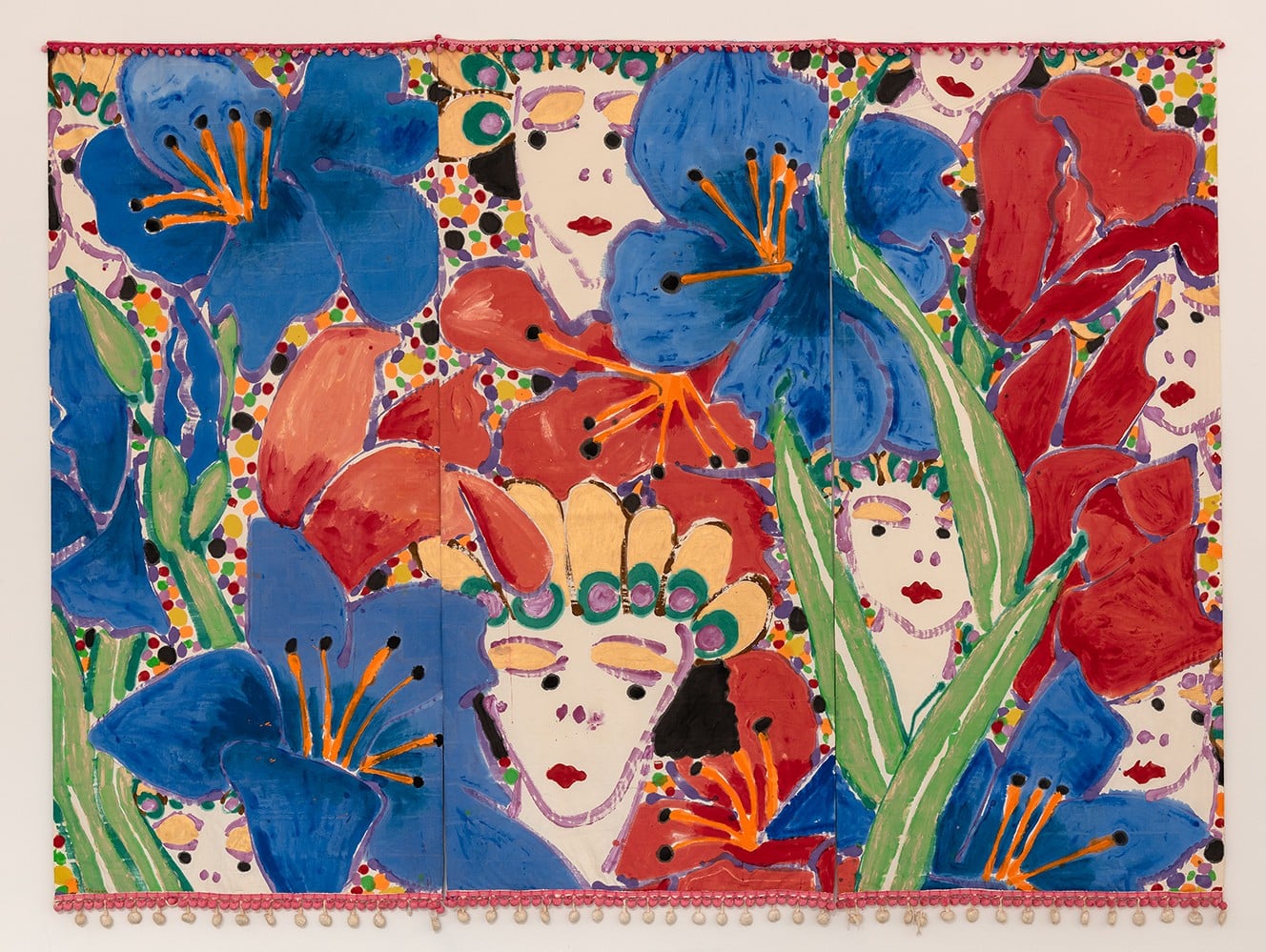Annandale-on-Hudson, New York ... With Pleasure: Pattern and Decoration in American Art 1972 - 1985
The Hessel Museum of Art will is presenting With Pleasure: Pattern and Decoration in American Art 1972–1985, the first full-scale scholarly North American survey of the groundbreaking yet understudied Pattern and Decoration art movement. Including painting, sculpture, collage, ceramics, textiles, installation art, and performance documentation, the exhibition spans the years 1972 to 1985 and features forty-five artists from across the United States. It is fitting that this exhibition be presented at the Hessel Museum as co-founder Marieluise Hessel was an early and strong advocate of Pattern and Decoration and numerous works from her collection will be on view.*
With Pleasure examines the Pattern and Decoration movement’s defiant embrace of forms traditionally coded as feminine, domestic, ornamental, or craft-based and thought to be categorically inferior to fine art. This expansive exhibition traces the movement’s broad reach in postwar American art by including artists widely regarded as comprising the core of the movement, such as Valerie Jaudon, Joyce Kozloff, Robert Kushner, Kim MacConnel, and Miriam Schapiro; artists whose contributions to Pattern and Decoration have been under recognized, such as Merion Estes, Dee Shapiro, Kendall Shaw, and Takako Yamaguchi; as well as artists who are not normally considered in the context of Pattern and Decoration, such as Emma Amos, Billy Al Bengston, Al Loving, and Betty Woodman. Originally on view at MOCA Grand Avenue from October 27, 2019 to May 11, 2020 and organized by MOCA Curator Anna Katz, with Assistant Curator Rebecca Lowery, the exhibition will be on view at the Hessel Museum of Art June 26 - November 28, 2021. It is accompanied by a fully illustrated, scholarly catalogue published in association with Yale University Press.
Often described as the first contemporary art movement comprised of majority female artists, Pattern and Decoration — or P&D, as it is commonly known — defied the dominance of modernist art by embracing the much-maligned category of the decorative. P&D artists gleaned motifs, color schemes, and materials from the decorative arts, freely appropriating floral, arabesque, and patchwork patterns and arranging them in intricate, almost dizzying, and sometimes purposefully gaudy designs. Their work across mediums pointedly evokes a pluralistic array of sources from Islamic architectural ornamentation to American quilts, wallpaper design, Persian carpets, and Japanese Imari ware ceramics. Pattern and Decoration’s maximalist, eclectic citation of all things ornamental flew in the face of the reductive, cool aesthetics of minimalism, modernist ambitions to purity and self-reflexivity, and conceptual art’s demotion of the handmade. Most importantly, it was intended as a recuperation of forms and techniques historically discredited on the basis of their “femininity” and their status as craft. Shaped and driven in large part by feminism and the development of feminist art historical methods that demystified the logic and rhetoric of value assignation, Pattern and Decoration artists understood modernism as a puritanical art of exclusion — of progressively stripping away or excluding forms and materials deemed extraneous — and sought to create an art based on both aesthetic and political principles of inclusion.
Pages: 1 · 2
More Articles
- The Guggenheim Museum Exhibits and Store in New York City; Works & Process Commissions on Tour
- Julia Sneden Wrote: Love Your Library
- Rebecca Louise Law: Awakening on View at Honolulu Museum of Art
- Lynn Hershman Leeson: Who Has Celebrated Her 80th Birthday and a New Exhibition, TWISTED, at The New Museum in New York City
- Explore the Royal Collection and an Exhibition, Masterpieces From Buckingham Palace
- Winterthur's Digital Collections: Boston Furniture, Spode, Patriotic America, Silversmith's Marks, Garden Collection and Soup Tureens
- The Autobiography of a Garden at The Huntington, a Joy for Viewers and Gardeners
- What? You Have Nothing to Do? Explore Some Museums Collections Online
- Ragna Brasse: A Selection of Her Architectural, Oriental and Cosmic Dream Visions
- Rumors Of War by Kehinde Wiley: Monuments and Their Role in Perpetuating Incomplete Histories and Inequality







